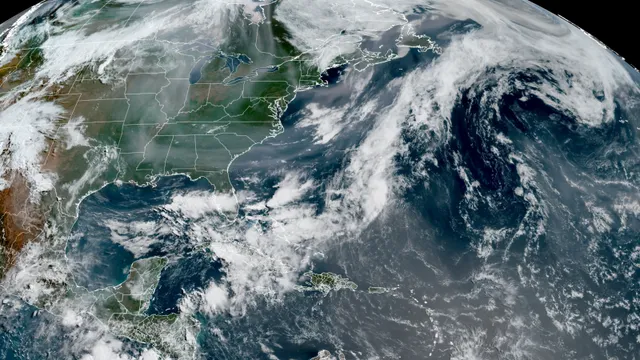
Canadian wildfires cause air quality crisis in the U.S
2025-06-03 06:19- A state of emergency has been declared in Manitoba due to uncontrolled wildfires.
- Air quality alerts are in effect in several U.S. states due to drifting smoke from Canada.
- The ongoing crisis highlights serious health and environmental concerns related to climate change.
Express your sentiment!
Insights
Canada is currently facing a severe wildfire crisis, particularly in the province of Manitoba, where a state of emergency has been declared. As of Thursday, more than 90 wildfires were raging out of control across Canada, displacing thousands of residents and prompting widespread air quality alerts in neighboring U.S. states. Specifically, 17,000 people have been forced to evacuate in Manitoba as the flames threaten homes and livelihoods, leading to a significant public safety concern. Air quality across the Upper Midwest of the United States, including Wisconsin, Minnesota, and Michigan, has been compromised due to thick smoke drifting southward from these Canadian wildfires. Due to the hazardous smoke conditions, officials have issued advisories that warn residents, especially sensitive groups such as children and those with respiratory conditions, about unhealthy air measurements. As the smoke spreads, large areas, including major U.S. cities like Chicago and Detroit, are bracing for potential health impacts from the deteriorating air quality. The situation has been exacerbated by climate change, which has intensified fire activity across North America, resulting in longer fire seasons and more severe wildfire events. Moreover, the atmospheric conditions are aiding the distribution of smoke across vast distances, with satellite imagery revealing a considerable plume stretching from the western United States to the Atlantic Ocean. Experts have noted that these particulates can have long-term health effects on individuals who breathe them in, with studies indicating increased risks of cardiovascular and respiratory issues even after the smoke subsides. It's crucial for residents to stay informed and take precautions as long-term impacts on public health become a more urgent issue in the wake of this environmental crisis. As smoke continues to drift across borders, the emergency response in Manitoba remains a high priority for officials, who are working collaboratively with federal agencies and health departments to monitor air quality levels and provide support to affected populations. This situation underscores the rising challenges posed by climate-related events and the importance of readiness and resilience in communities facing the growing threat of wildfires.
Contexts
Climate change is a critical factor influencing the frequency and intensity of wildfires around the world. Rising global temperatures, shifts in precipitation patterns, and prolonged drought conditions, all driven by climate change, create an environment conducive to wildfires. The frequency of extreme heat events has increased, which not only desiccates vegetation but also creates an increased risk of ignition, whether from natural sources like lightning or human activities. The correlation between temperature anomalies and wildfire incidents highlights the urgent need to understand how these changes are reshaping fire regimes across different ecosystems. As climates warm, regions that previously experienced moderate fire seasons are encountering more severe fire events, leading to a marked increase in the annual area burned. Drier conditions foster the proliferation of dry vegetation, which serves as fuel for wildfires. Additionally, areas that are subject to early snowmelt and delayed rainfall are facing an extended fire season, as vegetation becomes dry earlier in the year and remains susceptible to ignitions for a prolonged period. The interaction between climatic variables and fire behavior illustrates a concerning trend, linking the growing severity of fire seasons to the consequences of anthropogenic climate change. Moreover, the effects are not uniform across the globe. For instance, the western United States has experienced a notable increase in wildfire frequency and intensity, with data indicating a tripling of the area burned since the 1980s, correlating with rising temperatures and prolonged droughts. Conversely, while some regions may see increases in wildfires, others might experience a decrease, depending on various factors such as regional vegetation types, fire management practices, and the availability of moisture. These complex interactions necessitate tailored approaches to fire management and land use planning, ensuring that communities are equipped to adapt to these evolving challenges. In response to these alarming trends, strategies for mitigating wildfire risks must be integrated into climate action plans. This includes improving forest management practices, investing in fire prevention infrastructure, and enhancing community preparedness. Furthermore, addressing the root causes of climate change—namely greenhouse gas emissions—will be critical in curbing the rise of wildfire events. The intersection of climate change and wildfire frequency is a pressing issue that demands immediate attention, interdisciplinary research, and collaborative efforts, as the implications extend far beyond ecological damage, affecting air quality, biodiversity, and human health in the wake of increasing wildfire activity.